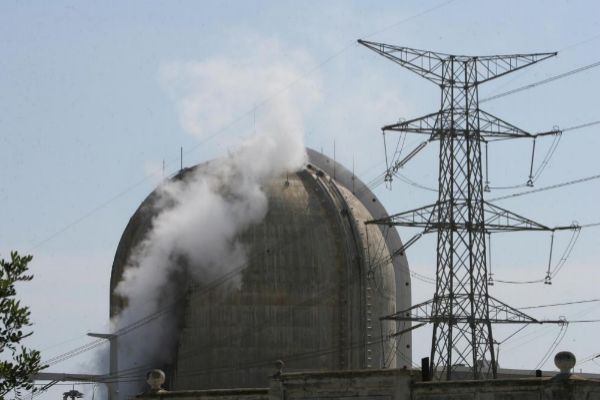Antonio Naranjo had barely 20 minutes left to finish his shift that Thursday, October 19, 1989. It was 9:40 p.m. when this veteran local police officer, now retired, received a call advising that there was smoke in the surroundings of the then young nuclear power station of Vandellós I, in the Tarragona town of the same name.
Naranjo approached in his vehicle to see what was happening and what he found was not just smoke: «There was a fire that nobody knew how to deal with. It was a chaos, a madness, ”he tells EL MUNDO when 30 years of the still today cataloged by the Nuclear Safety Council (CSN) as the most serious accident of the national atomic park.
His shift that day ended up extending until 03:00 a.m. "It was horrible. Firefighters were not prepared to act inside the plant and panicked, ”he explains. The fire that had started due to a mechanical failure in the turbine spread “in a chain” through other instances of the plant, affecting the systems that guaranteed core cooling, according to the conclusions of the technical reports and the judicial investigation carried out a posteriori. The automatic security system was neutralized by flooding after the fire and it was the emergency workers called that night who turned off the plant manually.
“The professionalism of the operation personnel, operators and supervisors of the plant must be considered and assessed, and that all the systems necessary to bring the reactor to a safe stop by automatic methods were lost, they had to do it manually, an intervention that was decisive to achieve an evolution favorable of the accident ”, declared then the then president of the CSN, Donato Fuejo, in the commission of Industry of the Congress. "It is enough to remember the negative role that the human factor has played in all known accidents: Chernobyl, etc.," he concluded.
Official investigations concluded that there was no radioactive escape that night in Vandellós, but there was a lot of panic. «In the Civil Guard barracks we had a device to measure the radiation, what happens is that it was turned off because they were listening to the radio. When he turned it on, he went crazy, ”says the local police witness to what happened that day.
The accident is still alive today in the memory of the inhabitants of this Catalan municipality who, decades later, has learned again to live with atomic energy. Vandellós I was closed by order of the Government one year after the fire and today it is still in the phase of dismantling, but Vandellós II remains operational only a kilometer away. This is the youngest plant in the Spanish nuclear park, opened in 1988 and with an operation forecast that extends until 2035 according to the energy transition plan signed by the power companies with the Government of Pedro Sánchez. «Today the town has overcome it and among the neighbors there is tranquility because the plant is a source of wealth. Many argue that they feed their workers, but others warn of their risks, ”he explains.
Another of the conclusions reached by the CSN is that the accident was not linked to the aging of the plant operated by Hifrensa but to "unpredictations and failures of the original design". That is, the same fire could have occurred 10 years before or 10 years later. «The incident could occur in the same way shortly after the start of the plant but, if it had occurred at that time, the consequences would have been much more serious because then the staff (who at the time of the accident on October 19 was perfectly trained and knew the plant very deeply) would not have been in those same conditions, ”said the then president of the CSN in Congress.
However, the Vandellós accident remains one of the flags raised by environmentalists in their fight for the closure of nuclear power plants in Spain. «For a few moments, the reactor parameters were about to exceed the safe values, which would have resulted in the melting of the core, an explosion and a massive leak of radioactivity ... Even though serious accidents are relatively infrequent , as it has been said, the effect is so devastating and so widespread that it is foolish to keep the nuclear power plants running, ”explained five years ago the member of Ecologists in Action and now a CSN advisor at the proposal of Podemos, Francisco Castejón. The supervisor organizes this week a day to recall the accident and take stock of the lessons learned from it. In the electricity sector it has been interpreted as an attempt to discredit nuclear energy by the new council controlled by PSOE and Podemos.
According to the criteria of The Trust Project
Know more- Spain
- Civil Guard
- Chernobyl
- Nuclear energy
- Health
ScienceA Japanese court acquits three former Tepco leaders over the Fukushima nuclear accident
Courts The TSJC imputes an ERC deputy for acting to achieve independence by unilateral means
Goodbye to the "Welcome to Uesca, bilingual ziudat. Charramos Aragonese" posters

